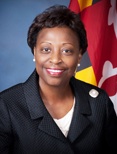Press Release: Maryland Kindergarten Readiness Takes Another Step Forward
Final Year of The Maryland Model For School Readiness; New Assessment Coming
For Immediate Release Contact: Bill Reinhard, 410.767.0486
Baltimore, MD (March 25, 2014)
The Children entering kindergarten in Maryland public schools are walking in with better academic, physical, and social skills than ever before, according to a new report by the Maryland State Department of Education (MSDE).
“Children Entering School Ready to Learn—School Readiness Information for School Year 2013-14,”areport by MSDE’s Division of Early Childhood Development, reveals steady progress across all demographic subgroups. Maryland students entering kindergarten fully prepared for learning stood at 83 percent in 2014. That is an increase of 69 percent over the past 12 years.
“Our nation’s achievement gap doesn’t suddenly materialize in third grade, eighth grade, or high school. It walks through the kindergarten door,” said State Superintendent of Schools Lillian M. Lowery. “The only way to eliminate gaps in achievement among racial and economic subgroups is by providing top quality early childhood education. The data is clear: it really works.”
The Maryland Model for School Readiness (MMSR), launched in 2001, is used to observe, evaluate, and document what each kindergartener knows and is able to do. That system is giving way next year to the new Ready for Kindergarten (R4K): Maryland’s Early Childhood Comprehensive System, which builds on the success of the MMSR, but sets a new baseline.
The R4K, developed through Maryland’s $50 million Race to the Top-Early Learning Challenge Grant in partnership with the Ohio Department of Education, aligns with the new College and Career-Ready Standards. R4K looks at seven domains: social foundations, physical well-being and motor development, language and literacy, mathematics, science, social studies, and the arts. R4K has two components:
- Early Learning Assessment, measuring the progress of learning in young children, three to six years old, across the seven domains.
- Kindergarten Assessment, administered to all incoming kindergarteners, measuring school readiness in the seven developmental domains.
“R4K expands on Maryland’s leadership in early childhood education,” said Dr. Rolf Grafwallner, Maryland’s Assistant State Superintendent for Early Childhood Development. “The more we understand where children are when they start formal learning, the better prepared we are to provide support and set our youngest students on the path to succeed.”
Today’s release of the final MMSR data reveals dramatic improvement in kindergarten readiness over the past 12 years. For example:
- School readiness levels for African American children have increased from 37 percent in 2002 to 80 percent – a 43-percentage point jump.
- The percentage of Hispanic children who are ready for school increased from 39 percent in 2002 to 73 percent this year, even as the student population has increased.
- The readiness of English language learners has also improved. The number of English language learners fully ready for kindergarten stood at 35 percent in 2002. This year it is 72 percent – a 37-percentage point increase.
- The number of special education students considered fully ready for kindergarten improved 26 percentage points since 2002 to 56 percent.
MSDE has found that improved MMSR results also translate to better results in the Maryland School Assessment by the time students reach third grade. Children who enter kindergarten fully school-ready are far more likely to be proficient in both reading and math by Grade Three.
The MMSR study results continue to spotlight the critical importance of high-quality early learning opportunities. Children who come into kindergarten from structured early-care settings started school better prepared for learning than those who remained at home or in the homes of relatives, the research found. Children enrolled in public school pre-K programs (83 percent fully ready for kindergarten), child care centers (89 percent), and non-public nursery schools (93 percent) the year prior to kindergarten exhibited stronger school readiness levels than those who were at home or in informal care settings the year prior to kindergarten. There also were significant gains for children who were enrolled in Head Start Centers, whose readiness increased from 29 percent in 2001-2002 to 73 percent in 2013-2014.
The complete School Readiness report is available on the special MSDE website, School Readiness Information.
# # #

